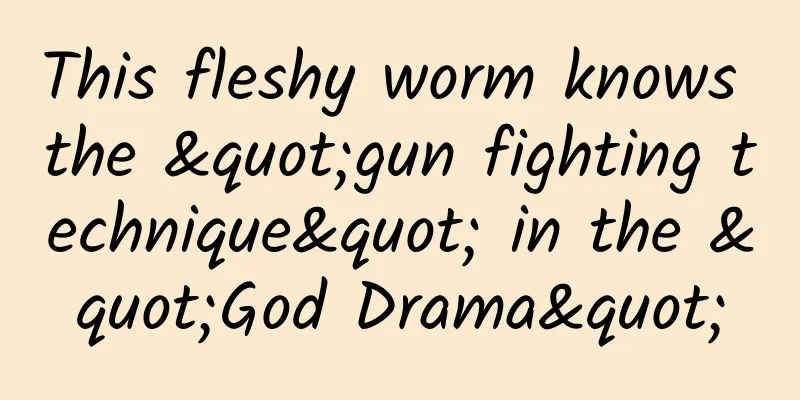This fleshy worm knows the "gun fighting technique" in the "God Drama"

|
Recently, the sand dollar has become a hot topic on Weibo with its malicious name. The name of the comb silkworm is almost as embarrassing, but they are definitely not "mentally retarded". In addition to Nobita Nobi, the comb silkworm is the only animal in the world that has the talent of both shooting and turning flower lines. "Sand dollars" are actually sea urchins of the order Clypeasteroida | Pixabay The comb silkworm belongs to the phylum Clawed Animals, which is a very ancient family and is related to the Cambrian star monstrous worm. The comb silkworm lives in the southern hemisphere and near the equator. The moist rotten wood and fallen leaves in the forest are their favorite places. Their body length is generally no more than 6 cm, and the particularly large species can reach 20 cm. The number of legs ranges from 13 to 43 pairs. Although the slender body and fleshy little legs are very similar to caterpillars, the comb silkworm is still somewhat cute when you look closely. There is a kind of comb silkworm named Eoperipatus totoro because it looks like the cat bus in "My Neighbor Totoro". The silkworm Peripatoides indigo lives in New Zealand and is considered vulnerable by the IUCN | strewick / inaturalist A reconstruction of the mid-Cambrian worm Hallucigenia sparsa, which once had its antennae and spines pointed upwards. | Matteo De Stefano/MUSE / Wikimedia Commons Unique weapon glue gun The prey of the silkworm includes insects, woodlice, spiders, etc. Due to its poor eyesight, it mainly relies on airflow and chemical signals to sense its prey. It will approach its prey from all angles and feel around with its antennae. Because the silkworm moves slowly, other animals generally do not regard it as a threat, but spiders with high vigilance will flee or fight back, and sometimes bite the silkworm. How does the slow-moving and plump comb silkworm subdue its prey? This requires mentioning its unique weapon - the glue gun. The pair of legs next to the comb silkworm's mouth have evolved into a "gun barrel". When it is close enough to the prey (usually 0.5~1 cm away), the pair of "guns" will spray out two thin streams of glue, which solidify into lines in the air. When the comb silkworm sprays, the "gun barrel" will vibrate at a fairly fast speed, so that the glue line will also fluctuate up and down, sticking to the prey from different directions, forming a tangled mess. Although it doesn't look very good, it is very effective. The human eye can hardly see its attack, and the prey is stuck to the ground and cannot move. To deal with dangerous prey such as spiders, the comb silkworm sometimes fires 30 times in a row. Peripatoides novaezealandiae | Mike Lusk / inaturalist Where does the glue come from? The comb silkworm's "gun" is connected to a pair of huge long glands in the body. Each gland is divided into two chambers, the front chamber stores glue, and the back chamber secretes glue. The components of glue include protein, sugar, lipids, and a substance called nonylphenol. The function of nonylphenol is a surfactant, which makes it easier for glue to adhere to the surface. The comb silkworm is the only organism that can produce natural nonylphenol. The comb silkworm, whose scientific name is Macroperipatus torquatus, can store "glue" that accounts for 11% of its body weight. The "glue gun" can also be sprayed at predators to protect itself. Another interesting thing is that when the silkworm sprays, the frequency of the "gun barrel" swings 30 to 60 times per second. This "gun fighting technique" far exceeds the muscle reaction speed of the worm. The principle is simple: there is no need for the silkworm to actively vibrate, the inertia of the "glue" spraying quickly is enough to make the soft "gun barrel" swing back and forth, just like the watering tube will shake when spraying water. After the prey is entangled in the sticky silk, the comb silkworm will bite the prey with a pair of "big teeth" (also formed by the deformation of the legs) on the side of its mouth, inject saliva containing digestive enzymes, kill it, and partially melt the soft tissue to facilitate eating. The comb silkworm will first eat the solidified glue silk stuck to the prey for recycling, and then eat the prey. The comb silkworm eats very slowly, and the whole process may take more than ten hours. Highly intelligent bugs Although they look primitive, the central nervous system of comb silkworms is quite developed, and as worms, they are surprisingly smart in some aspects. For example, they can weigh investment and benefits. The "ammunition" of the "glue gun" is very expensive. After M. torquatus has used up all the stored glue, it will take 24 days to refill it. So the comb silkworm must use it carefully. M. torquatus must choose insects of the right size to "shoot". If they are too small, they will not be able to make up for the consumption of glue, and if they are too big, they will not be able to stick to the glue line. If they run away with the glue line, they will lose more than they gain. If they encounter large prey with a lot of meat but can be subdued, the comb silkworm will go all out and consume 80% of the glue to shoot. A, Ooperipatus hispidus. B~F, Comb silkworms release glue and eat prey. G, Comb silkworms tolerate their own kind. H, Silk threads released by comb silkworms carry small drops of glue | E. Stylianidis / Materials Science (2019) One species of silkworm, Euperipatides rowelli, is even social. E. rowelli live in groups of up to 15, with the largest female having the highest status. When encountering prey, the adult silkworms in the group will "shoot" together to subdue the prey, and then eat it in order of status. The "queen" starts eating first, and the other silkworms have to wait at least 45 minutes after she starts eating before they can eat. A silkworm of the genus Oroperipatus, photographed in Ecuador | Geoff Gallice / Wikimedia Commons When two E. rowelli from the same group meet, they will touch each other with their antennae. Sometimes the one with higher status will attack, while the one with lower status will avoid conflict. If they are from different groups, they will fight each other, which shows that they may recognize their relatives through chemical signals. We are accustomed to monkeys, dogs, and even ants doing such behavior, but it is really surprising that two worms behave so "socially". The silkworm is not a "mentally retarded" person, but a wise man in the history of evolution. It has survived from ancient times to the present and is still inventing new things. |
<<: Who are the people who support GMOs and who are against them? Are GMOs good or bad?
Recommend
Luban’s 11.11 e-commerce marketing strategy in 2019!
E-commerce advertising has three main purposes: f...
The “knowledge” in “knowledge payment” is as much about “sharing” as the “sharing economy”
1 In “ knowledge payment ”, the “knowledge” compo...
Talk: How is an excellent community operated?
This article will focus on the management and dev...
People from Yunnan must be at the top of the food chain!
This graphic and text are jointly produced by Yun...
"Charging" with bright sunshine: the world's first "two-tower one-machine" solar thermal energy storage power station is coming →
Author: Duan Yuechu and Huang Yanhong In the wave...
From Didi to Mobike, the sharing economy has to overcome two major challenges
"Sharing economy" is the most popular w...
Performance marketing is too difficult
Not wasting a single cent of advertising budget i...
The memory of a generation! Some WeChat emoticons disappeared silently
On December 2, the topic "These WeChat emoti...
Three members of the Chinese fencing team were diagnosed with COVID-19, and the entire team was isolated for medical observation!
China News Service, March 20. On the 20th, the Ch...
Skipping breakfast can easily lead to 3 diseases! The first one torments many people...
Today's young people are really too difficult...
Are sleep twitches divided into those that wake yourself up and those that wake others up?
Image source: Tuchong Creative I was sleeping sou...
Interesting Talk | Why haven’t humans formed a large number of fossils? Is it because human “skeletons” do not have the conditions to form?
I believe everyone has seen photos of fossils. Sc...
Quzhou SEO Training: What are the reasons for the increase in website bounce rate? How to solve it?
Why do we have to analyze from the user's per...
Hacker doomsday? A brief analysis of Meizu Flyme 4 security
Nowadays, smartphones have long become people'...
Tmall Genie CCL vs. Xiaodu at Home 1S, which smart speaker with screen is better?
In the past two years, as Chinese companies and c...








![[Smart Farmers] Although “earthy”, “rich”, protecting the world in the soil](/upload/images/67f242f10c06a.webp)
